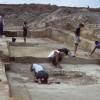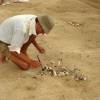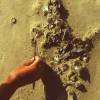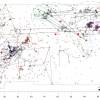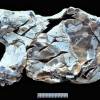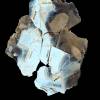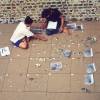Eating out was a very social matter for early humans
12 August 2020
A half-a-million-year-old internationally significant archaeological site in Sussex, England, offers unprecedented insights into the life of a poorly understood extinct human species, according to new UCL research.
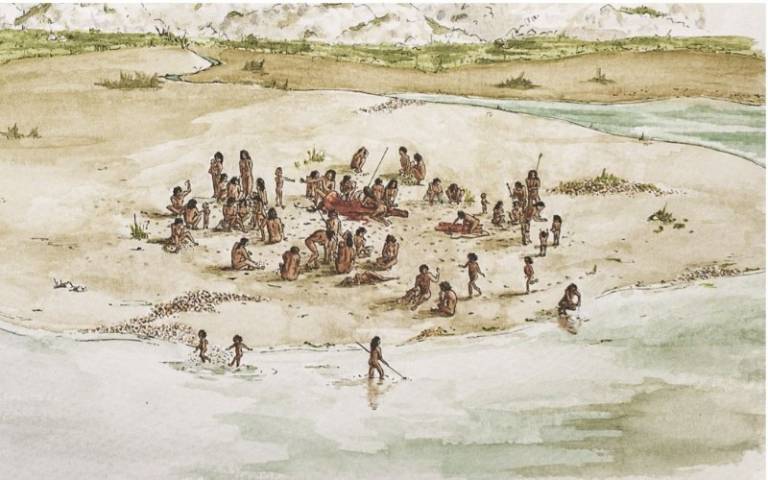
The findings of a meticulous study led by UCL Institute of Archaeology are detailed in a ground-breaking new book ‘The Horse Butchery Site’, published by UCL Archaeology South-East’s ‘Spoilheap Publications’.
The study pieces together the activities and movements of a group of early humans as they made tools, including the oldest bone tools documented in Europe, and extensively butchered a large horse 480,000 years ago.
Project lead, Dr Matthew Pope (UCL Institute of Archaeology), said: “This was an exceptionally rare opportunity to examine a site pretty much as it had been left behind by an extinct population, after they had gathered to totally process the carcass of a dead horse on the edge of a coastal marshland.
“Incredibly, we’ve been able to get as close as we can to witnessing the minute-by-minute movement and behaviours of a single apparently tight-knit group of early humans: a community of people, young and old, working together in a co-operative and highly social way.”
The Horse Butchery Site is one of many excavated in quarries near Boxgrove, Sussex, an internationally significant area – in the guardianship of English Heritage – that is home to Britain’s oldest human remains. The site was one of many excavated at Boxgrove in the 1980s and 90s by the UCL Institute of Archaeology under the direction of Mark Roberts.
In the course of excavating the site, more than 2000 razor sharp flint fragments were recovered from eight separate groupings, known as knapping scatters. These are places where individual early humans knelt to make their tools and left behind a dense concentration of material between their knees.
Embarking on an ambitious jigsaw puzzle to piece together the individual flints, the archaeologists discovered that in every case these early humans were making large flint knives called bifaces, often described as the perfect butcher’s tool.
Dr Pope commented: “We established early on that there were at least eight individuals at the site making tools, and considered it likely that a small group of adults, a ‘hunting party’, could have been responsible for the butchery. However, we were astonished to see traces of other activities and movement across the site, which opened the possibility of a much larger group being present. We worked with our reconstruction artist Lauren Gibson to bring the site and its social complexity to life.”
Detailed study of the horse bones shows the animal was not just stripped of meat, but each bone was broken down using stone hammers so that the marrow and liquid grease could be sucked out. The horse appears to have been completely processed, with the fat, marrow, internal organs and even the partially digested stomach contents providing a nutritious meal for the early human group of 30 or 40 individuals envisaged for the site.
However, the horse provided more than just food, and detailed analysis of the bones by Simon Parfitt (UCL Institute of Archaeology) and Dr Silvia Bello (Natural History Museum, London) found that several bones had been used as tools called retouchers.
Simon Parfitt said: “These are some of the earliest non-stone tools found in the archaeological record of human evolution. They would have been essential for manufacturing the finely made flint knives found in the wider Boxgrove landscape.”
Dr Bello added: “The finding provides evidence that early human cultures understood the properties of different organic materials and how tools could be made to improve the manufacture of other tools. Along with the careful butchery of the horse and the complex social interaction hinted at by the stone refitting patterns, it provides further evidence that early human population at Boxgrove were cognitively, social and culturally sophisticated.”
Cooperative activity amongst larger numbers of people suggests these temporary sites could have been highly social spaces for interaction, learning and the sharing of tools and ideas. The Horse Butchery Site at Boxgrove shows this behaviour more vividly than any other site so far discovered in the archaeological record.
Questions still remain over where the Boxgrove people lived and slept and even what these people, ascribed to the poorly understood early human species Homo heidelbergensis, looked like. Answers to those questions may well rest in the wider 26km ancient landscape, which lies preserved under modern Sussex.
Barney Sloane, National Specialist Services Director at Historic England said, “This research is a timely reminder of the power of archaeology to illuminate details of remarkably intimate events across a vast gulf of time and at the same time to improve our understanding of how human beings evolved. The discovery, in a quarry site, demonstrates clearly the value of ensuring that our planning policies take account of archaeology’s potential for scientific advancement.”
The project was funded by Historic England, the Arts and Humanities Research Council (University of Bradford’s Fragmented Heritage) with support from the UCL Institute of Archaeology, the Natural History Museum (supported by the Calleva Foundation) and the British Museum.
Links
- The Horse Butchery Site book
- UCL Archaeology South-East
- UCL Archaeology
- Dr Matthew Pope’s academic profile
Image
- Lauren Gibson’s reconstruction drawing of how the horse butchery took place, based on the mapped distribution of artefacts and bones. The scene involves the whole early human group of Boxgrove people, from infants to the elderly, as they worked and fed together.
- Copyright UCL Institute of Archaeology
Media Contact
Natasha Downes
+44 20 3108 3844
n.downes [at] ucl.ac.uk
 Close
Close


